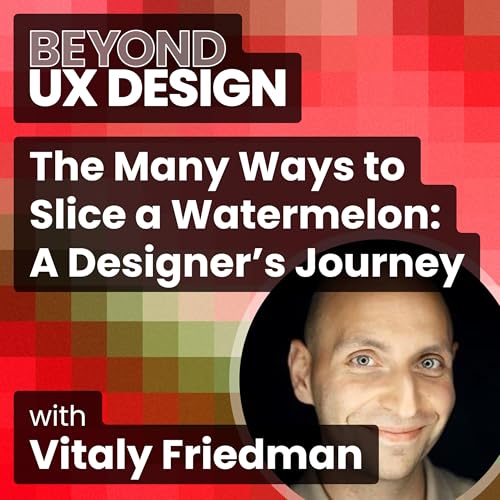Most designers hit senior level and suddenly there’s no obvious next step. In this episode, Ran Liu breaks down why the smartest career move may not be straight up, but diagonal. We unpack how to recognize stagnation, build visibility, stretch your skills, and create the kind of opportunities your company can’t (or won’t) give you.
What if the fastest way to grow your design career isn’t a promotion?
What if it's a diagonal move into work that stretches your range and makes you harder to replace?
Every designer eventually hits that moment: you’ve earned trust, you’re doing great work, you’ve reached senior… and then the ladder suddenly disappears. No clear next step. No path to promotion. And maybe no manager who even understands your craft well enough to help. In this episode, I talk with product designer and Ran Talks Design host Ran Liu about why this happens so often—and why the smartest career move isn’t always upward.
Ran shares how she discovered the idea of the diagonal move: a strategic shift that increases your scope, title, or company maturity all at once. She opens up about the moment she realized she was stuck—after years of impact, only to hear “you’re almost there” during promotion season. We walk through how to identify when your environment can’t (or won’t) support your growth: unclear leveling, lack of ownership, inconsistent feedback, and a ceiling that never seems to move.
We also explore the kind of work you need before you make a diagonal move—building the right experience, designing your portfolio strategically, navigating “visibility guilt,” and reframing self-promotion as sharing what you’ve learned instead of bragging. Ran also breaks down practical ways to expand your influence inside your company, build a network that remembers you, and create opportunities even when no one is handing them out. If you’ve ever felt stuck at senior, this episode will show you how to take the wheel again. Give it a listen—you’ll walk away with a new way to think about your career.
Topics:
• 02:59 - The Career Plateau: What's Next?
• 03:14 - Guest Introduction: Ran Liu
• 04:08 - Understanding the Diagonal Move
• 06:22 - Challenges in Career Growth
• 13:28 - Taking Control of Your Career
• 22:48 - Strategic Career Planning
• 32:05 - The Shocking Pay Disparity Revelation
• 32:34 - The Importance of Visibility in Career Growth
• 33:20 - Building Confidence and Visibility
• 34:59 - Leveraging LinkedIn for Networking
• 36:40 - The Power of Community Engagement
• 39:49 - Navigating Internal Visibility for Promotions
• 44:03 - Sharing Failures and Learning from Them
• 46:11 - Daily Habits for Career Momentum
Helpful Links:
•
—
Thanks for listening! We hope you dug today’s episode. If you liked what you heard, be sure to like and subscribe wherever you listen to podcasts! And if you really enjoyed today’s episode, why don’t you leave a five-star review? Or tell some friends! It will help us out a ton.
If you haven’t already, sign up for our email list. We won’t spam you. Pinky swear.
• Get a FREE audiobook AND support the show
• Support the show on Patreon
• Check out show transcripts
• Check out our website
• Subscribe on Apple Podcasts
• Subscribe on Spotify
• Subscribe on YouTube
• Subscribe on Stitcher
 1 hr and 15 mins
1 hr and 15 mins 1 hr and 2 mins
1 hr and 2 mins 9 mins
9 mins 1 hr and 6 mins
1 hr and 6 mins 10 mins
10 mins 1 hr and 12 mins
1 hr and 12 mins Oct 30 202516 mins
Oct 30 202516 mins 1 hr and 16 mins
1 hr and 16 mins
